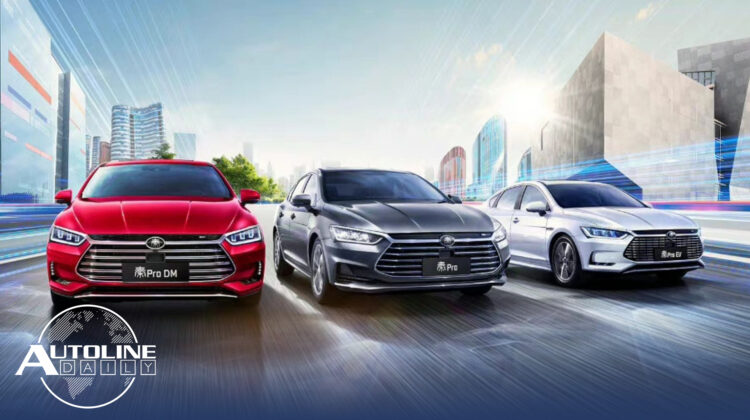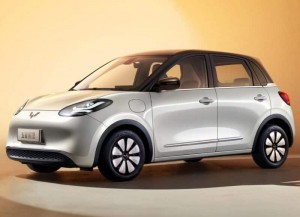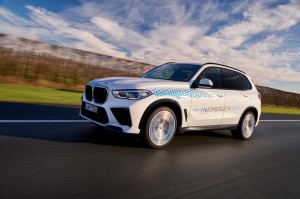

Follow us on social media:
Runtime: 10:18
0:08 Has an EV Price War Started?
1:00 CATL Cuts Battery Prices
1:33 VinFast Slashes Lease Prices
2:46 Wuling Bingo Comes with Air Mattress
4:13 BMW Still Bullish on FCEV
5:26 Hyundai Shows Off Performance FCEV
7:01 Tesla Berlin Ramping Up Fast
7:46 Li-Cycle Building Big Battery Recycling Plant
8:28 Honda Signs EV Battery Recycling Deal
8:50 FEMA Wants AM Radio in EVs
Visit our sponsors to thank them for their support of Autoline Daily: Bridgestone, Intrepid Control Systems, and Schaeffler.
This is Autoline Daily, the show dedicated to enthusiasts of the global automotive industry.
HAS AN EV PRICE WAR STARTED?
One of the biggest complaints against electric cars is that they cost too much. But we might be at the very beginning of a price war that could make EVs more affordable. It all started when Tesla slashed prices up to 20% in early January. Several other automakers followed suit, notably Ford with the Mach E. And while Tesla later raised prices a bit, the impact of the cuts is still rippling through the industry. Car News China reports that BYD quietly cut prices between $1,000 and $2,800 in several major Chinese cities. It did not even announce the cuts. BYD sells more EVs in China than any other automakers, so the cuts indicate that either the market is softening or it’s going for more market share or both.
CATL CUTS BATTERY PRICES
And it’s not just with electric cars. CATL, the world’s largest battery maker, is cutting battery prices by 6% for customers in China. One reason it can do that is that the cost of lithium carbonate, a key ingredient in batteries, is coming down. CATL expects the price to drop in half. CATL is using its marketing muscle to protect its 37% global market share and it’s going to force other battery makers to cut prices even if they can’t afford to do it.
VINFAST SLASHES LEASE PRICES
And VinFast is already slashing prices even though it hasn’t started delivering cars to customers yet. When the Vietnamese EV maker started taking orders in the U.S. market last year, the lease price was $599 a month for 24 months. Now it chopped that down to $399, and for customers in California it’s only $274. VinFast said it had to cut its lease prices to stay competitive with other brands, but we say that when you cut prices up to 50% it’s because you’re deeply worried that the product won’t sell.
WULING BINGO COMES WITH AIR MATTRESS
As we reported last week, Wuling only makes about $22 in profit for every MINI EV that it sells, so it’s coming out with more upscale entry-level EVs. And we think its new Bingo hatchback is pretty clever too. First, it put its money in the right places. The Bingo has decent styling, the interior is simple, but has good looking materials and surface finishes and a big high-res display screen. Wuling also made clever use of its available space. It shows how you can fit a bunch of camping gear, including enough room for a case of bee… I mean, soda pop in the in-floor storage in the trunk and there’s an available custom air mattress that fits perfectly when both rear seats are folded down. The Bingo features either a 41 or 68 horsepower electric motor, roughly 200 or 330 kilometers or 125 or 200 miles of range and a price between $10,000 and $14,000. We’d like to thank CarNewsChina for getting its hands on these pictures and if you need a smile on your face today, click the link in the transcript or description box for this story, scroll down to the very last paragraph and read CarNewsChina’s take on the inflatable mattress. You’re welcome.
BMW STILL BULLISH ON FCEV
BMW says with the right conditions, hydrogen fuel cell technology could become a pillar of its product portfolio, so it continues to develop the tech. It just launched a pilot fleet of less than 100 retrofitted versions of the X5 that will go into service throughout the year. They feature fuel cells from Toyota, which has had a partnership with BMW since 2013. The fuel cells generate a continuous output of 125 kilowatts, while the EV drive unit produces a total of 295 kW or 401 horsepower. The vehicle holds 6 kilograms of hydrogen on a full tank, which is about the same as the Hyundai Nexo. The iX5 Hydrogen has about 500 kilometers or roughly 310 miles of range on the WLTP cycle. While BMW sees potential in fuel cells, it has tiptoed along while it waits for those right conditions. The iX5 Hydrogen was first shown in 2019, initial prototypes came in 2021 and now it’s getting to fleet tests.
HYUNDAI SHOWS OFF PERFORMANCE FCEV
But it’s not just BMW and Toyota developing fuel cells, Hyundai is too and it’s also looking at something that’s a little more fun. Last year it showed off the N Vision 74 Concept. Based off the Pony Coupe Concept from 1974, it features two electric motors that combine for 500 kW or 670 horsepower, a 4.2 kg fuel cell system and a 62.4 kWh battery pack. And the VP of Brand Management at Hyundai’s N division, said his “personal wish is to produce this vehicle” after he asked reporters at the Canadian International Auto Show, how much they’d pay for a car? The same exec also said the company will probably only make investments in a project like this at first, but it is interesting that it would like to know what people would pay.
TESLA BERLIN RAMPING UP FAST
It may have started out slow, but Tesla is really cranking up production at its plant in Berlin. It’s now producing 4,000 Model Ys per week, three weeks ahead of schedule. In October, it was making 2,000 cars a week. In December that jumped to 3,000. Now it’s running at 4,000 and by the end of June it will be at 5,000. The plant was tooled for a maximum capacity of 500,000 vehicles a year, which is about 10,000 a week. Meanwhile, Tesla’s plant in Shanghai is now producing 20,000 a week, including 13,000 Model Ys and 7,000 Model 3s.
LI-CYCLE BUILDING BIG BATTERY RECYCLING PLANT
One of the arguments against electric cars is that one day all those used batteries will be an environmental nightmare. But that ignores the fact that battery recycling is coming on fast. And the Canadian battery recycler Li-Cycle just got a $375 million loan from the U.S. Department of Energy to build a recycling facility in Rochester, New York. Once it’s fully operational, the site will have an annual capacity to produce up to 8,500 metric tons of lithium carbonate, 48,000 tons of nickel sulfate and 7,500 tons of cobalt sulfate.
HONDA SIGNS EV BATTERY RECYCLING DEAL
Honda is getting in on the recycling action, too. It signed a deal with the U.S. battery recycler, Ascend Elements, which will supply Honda with lithium, nickel and cobalt from recycled lithium-ion batteries. Honda will use those materials in batteries for EVs produced in North America.
FEMA WANTS AM RADIO IN EVs
Is this the beginning of the end of AM radio in cars? Tesla was the first to drop AM radio. Last year, Ford followed. No AM radios in the F-150 Lightning. Automakers say that electromagnetic interference from EV motors distort AM radio signals. But automakers can use shielding to protect the AM signal. FEMA, the Federal Emergency Management Agency, doesn’t like this trend because AM radio is used to broadcast emergency alerts and warnings during natural disasters. Seven ex-heads of FEMA sent a letter to Transportation Secretary Pete Buttigieg and members of Congress urging them to force automakers to put AM radio in EVs. While drivers can use smartphones to stream radio stations, FEMA says the signals keeping them online aren’t as reliable as AM radio during an emergency.
And that brings us to the end of today’s show. Thanks for tuning in.
Thanks to our partner for embedding Autoline Daily on its website: WardsAuto.com
Seamus and Sean McElroy cover the latest news in the automotive industry for Autoline Daily.








